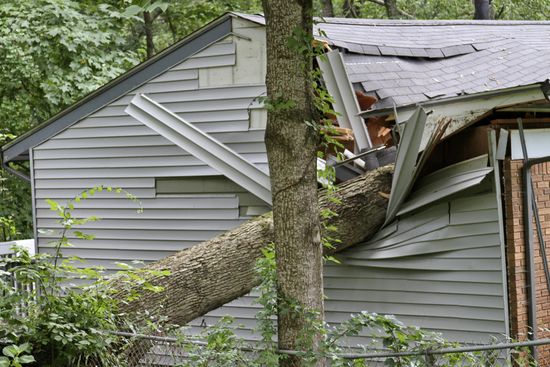Flat roofs have become increasingly popular in both residential and commercial construction. They provide unique architectural aesthetics, efficient use of space, and often cost-effective solutions for roofing needs. However, they also come with their own set of challenges in maintenance and repair. In this comprehensive guide, we will delve into the various aspects of flat roof systems and how to care for them effectively.
What is a Flat Roof?
Flat roofs are characterized by their minimal slope, typically less than 10 degrees. Unlike pitched roofs that require a steep angle for water drainage, flat roofs are designed to be nearly level. This design offers several advantages, especially in urban settings where maximizing usable space is essential.
Types of Flat Roof Systems
There are primarily three types of flat roof systems:
Built-Up Roofing (BUR)- Consists of multiple layers of asphalt and fabric. Known for durability but requires regular maintenance.
- A single-ply membrane that is easy to install. Offers flexibility and resistance to UV rays.
- Includes materials like TPO (Thermoplastic Polyolefin) or EPDM (Ethylene Propylene Diene Monomer). Lightweight and easy to repair.
Advantages of Flat Roofs
Space Efficiency- Flat roofs create additional usable space for rooftop gardens or HVAC units.
- Generally lower material costs compared to pitched roofing systems.
- Simpler access makes routine inspections easier for licensed roofing contractors.
- Can be equipped with insulation materials that enhance energy savings.
Disadvantages of Flat Roofs
Water Drainage Issues- The lack of slope can lead to ponding water if not properly installed or maintained.
- More prone to leaks compared to sloped roofs if not regularly inspected and repaired.
- Typically requires more frequent replacements when compared to traditional pitched roofs.
Common Materials Used in Flat Roofs
Understanding the materials used in flat roof construction is crucial for effective maintenance:
- Asphalt: Durable but may require periodic resurfacing. Rubber Membrane: Flexible; however, it can be punctured easily. TPO: Energy-efficient with good heat reflection properties.
How Does a Flat Roof Work?
Flat roofs function by using a waterproof membrane that prevents water infiltration while allowing any excess water to drain off through built-in drainage systems or scuppers. This system plays a vital role in ensuring the longevity of the roofing structure.
Installation Process by Certified Roofing Contractors
The installation process involves several steps:
Assessment Preparation Layering Sealing Final InspectionWorking with certified roofing contractors ensures adherence to local building codes and safety standards, which ultimately contributes to the quality of your flat roof system.
Routine Maintenance for Flat Roofs
Regular maintenance is paramount for extending the life span of your flat roof system:
Monthly Inspections
- Check for debris accumulation. Examine seams and flashing for integrity.
Annual Professional Inspections
Licensed roofing contractors should conduct thorough inspections annually to identify potential issues before they become significant problems.
Cleaning Gutters and Drains
Keep gutters and drains free from debris and clogs; this helps prevent water pooling on your roof surface.
Addressing Minor Repairs Promptly
If you notice any cracks or roofing contractors blisters, it's essential to address these promptly through professional roof repair services before they escalate into costly repairs or full replacements.
Signs You Need Emergency Roofing Services
Knowing when it's time to call in emergency roofing services can save you money down the road:
Water Stains on Ceilings Visible Cracks or Blisters Ponding Water on the SurfaceFAQs
1. What is the average cost of flat roof installation?
The average cost varies based on materials but typically ranges between $5,000 and $10,000 depending on size and complexity.
2. How long do flat roofs last?
With proper maintenance, flat roofs can last anywhere from 15-30 years depending on the materials used.
3. How often should I check my flat roof?
It’s advisable to perform monthly visual inspections and schedule professional evaluations at least once a year.

4. What causes flat roof leaks?
Leaks can result from poor installation, weather damage like hail or wind, or wear over time due to UV exposure.
5. Can I walk on my flat roof?
Yes, but it’s advisable only if necessary and during dry conditions—always consult with licensed roofing contractors first!
6. What’s involved in a roof inspection?
A typical inspection includes checking for visible damage, ensuring drainage systems are clear, examining seams and flashings, and looking for signs of wear.
Conclusion
In conclusion, understanding your flat roof system is key to ensuring its longevity and effectiveness in protecting your home or business from environmental elements. Regular inspections by licensed roofing contractors paired with proactive maintenance can mitigate most issues that arise with flat roofs over time—saving you money on future repairs or replacements!
For anyone considering roofing contractors Southern Roofing Systems of Foley installing or maintaining a flat roof system, following this beginner's guide will help you navigate the complexities involved while enjoying peace of mind knowing you're making informed decisions regarding your property’s protection against the elements! Whether you're searching for commercial roofing services or need emergency roofing services, choose certified professionals who understand the nuances specific to these unique structures!
Remember: A little knowledge goes a long way in protecting one of your most significant investments—your home!